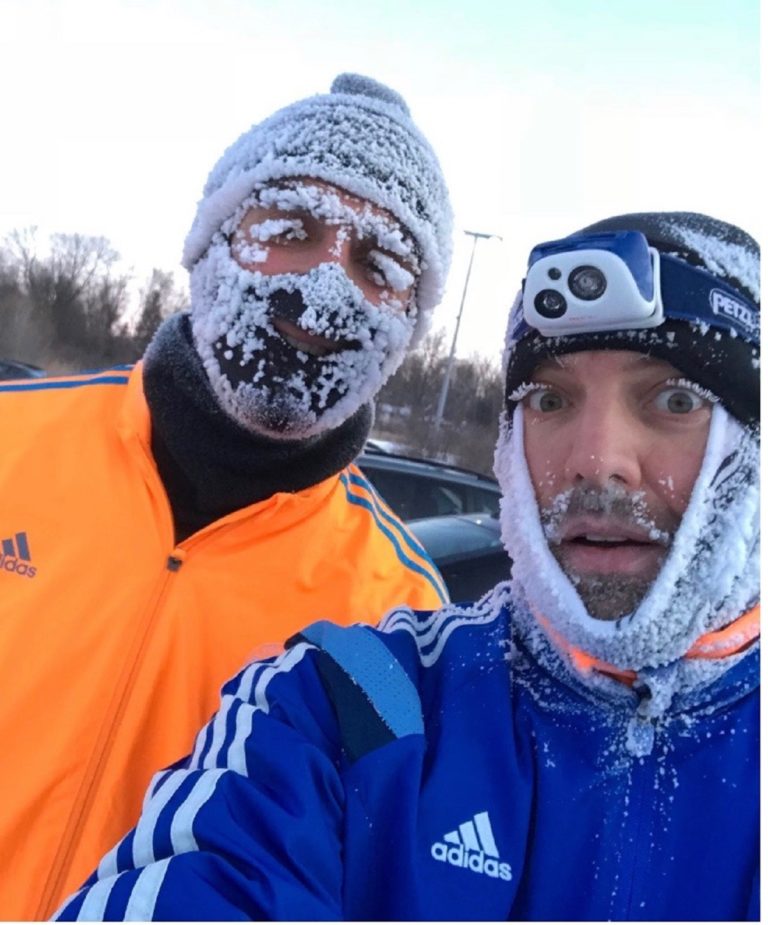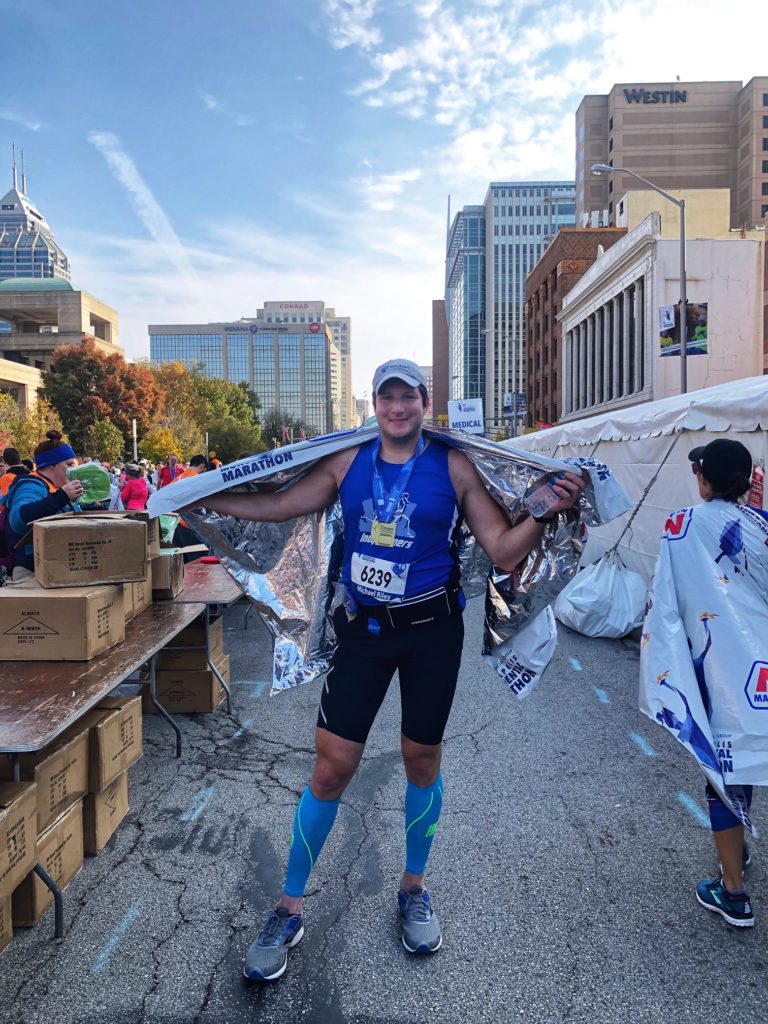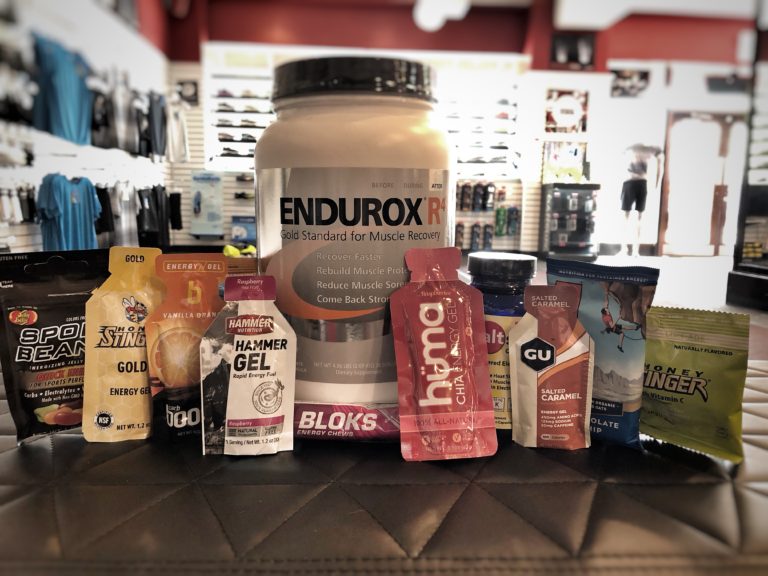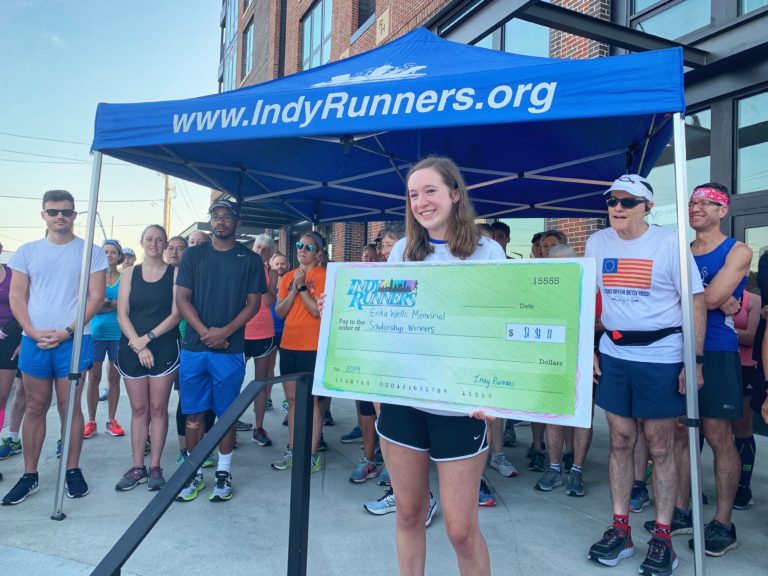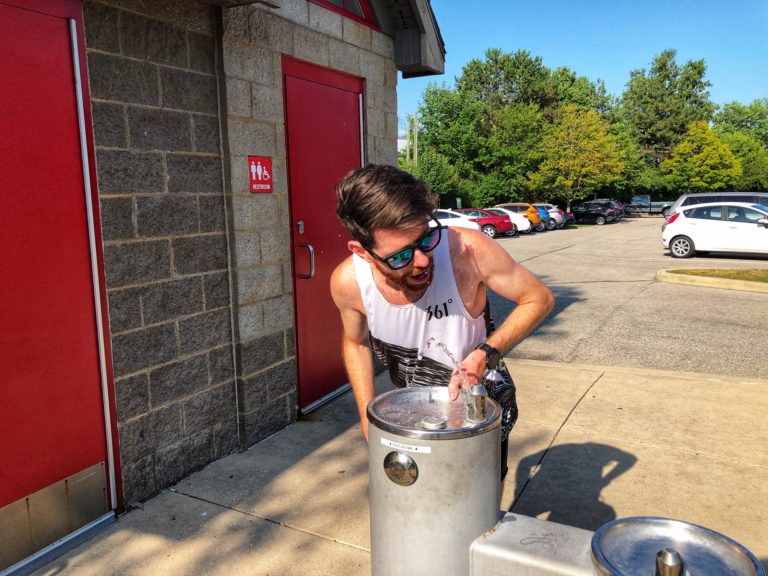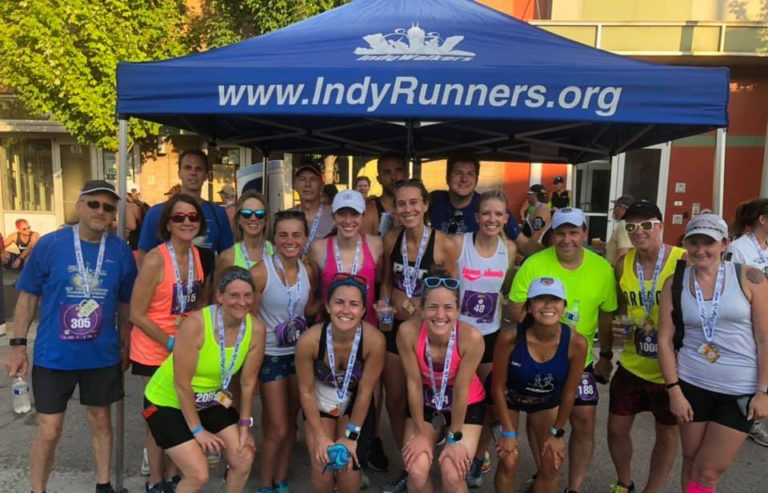Deciding what to wear while running and walking in an Indianapolis winter isn’t an easy task. Negative wind chills at the beginning of the week can easily shift to sixty degrees and sunny by the end of the week. One thing that won’t shift, however, is the date of that Spring race you signed up for in November. I mean, who wants to train on a treadmill every day until the end of March? This blog post is going to help you make sure you have the perfect running or walking outfit to tackle the fickle Indiana weather all season.
Dress for “Adjusted” Temperature.
The first thing you want to think about when deciding what to wear before a run or walk is the “adjusted” workout temperature. When you run or walk, your body is going to heat up, and your outfit needs to be suited to deal with this change comfortably. Try to dress for a temperature that is 15-20 degrees warmer than it actually is outside. I look at the “Feels like” temperature on my weather app (which takes factors like windchill and humidity into account) and go from there. Everyone responds to temperature changes differently, so it may take multiple trials to figure out what is right for you. Start out by making the 15-20 degree adjustment, which is pretty reliable, and then make further changes as you see fit. Also, keep in mind how strenuous your run or walk will be. A leisurely jog or walk may not require as extreme an adjustment to the actual outside temperature as a fast-paced interval workout will.

Choose the right Base Layer.
A good base layer uses special synthetic fabric (and not cotton) and weaving technology to help wick (pull away) moisture away from your skin to aid in the evaporation of sweat. These are durable shirts that will never fade and will benefit you in hot or cold conditions. The most underrated winter base layer in my opinion is the wind boxer shown above. It’s a great piece for men and women, but to the guys out there: if it’s cold enough, you will wish you had a pair, trust me. 😉

The Mid Layer helps regulate body temperature.
The mid layer helps regulate your body temperature by directing body heat back into your body and by stopping cold air from passing through to your body. They often feature specially placed vents, fleece-lined panels, and, in some cases, protective wind and rain shields. Many thermal layers contain special pockets to hold personal items like phones and keys. For the majority of the winter season, you can easily get by with just a base layer and a mid layer.

Top it off with an Outer Protection Shell.
The outer protection shell is most beneficial in poor winter conditions. Its function is to protect you from rain, sleet, ice, snow, wind, and more. There are a variety of options available depending on the level of protection you require. There is a variety of apparel items, from vests to jackets, available to provide you with the protection you need on any given day.

Don’t forget your head and hands.
Having a good running hat and pair of gloves is crucial for making it through the winter. There are a variety of different options and thicknesses to fit what you are looking for. If your hands are super cold all the time, then I suggest a mitten. If being able to use your phone is important, there are now a lot of options that allow you to use a touch screen without taking off your gloves. I personally run with a glove-mitten hybrid so that I have the option of a mitten but can switch to a glove when my hands get warm. On the really cold days a balaclava or neck gaiter are crucial to protect your face against the elements. It’s best to try on different options and think about when you will use them. A good hat and pair of gloves can get you through several winters.
Hopefully this blog post gave you a good idea of how to tackle difficult winter training days. Investing in a good winter wardrobe will not only help you train like a champ this winter, but for several winters to come. Best of luck with your training. If you liked this post next time you see me say balaclava and I will take that as a thank you!

